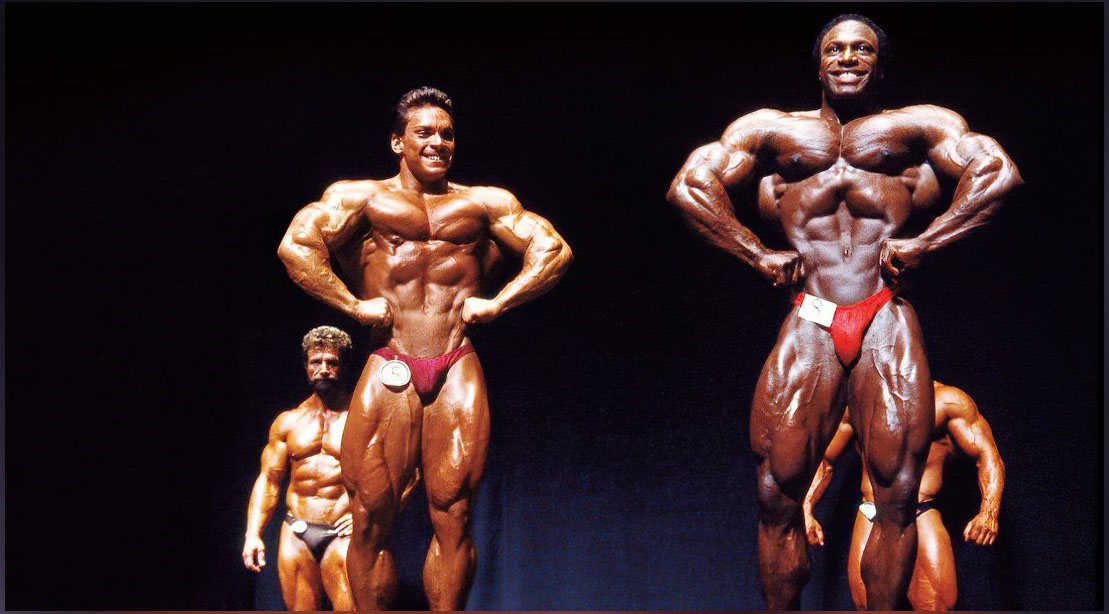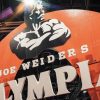If There Had Been a 212 lb. Class
Sports like Boxing and Olympic weightlifting, in which body weight is a significant factor are generally held using weight divisions. Bodybuilding also uses several weight categories, at the amateur level. Up until 1980, IFBB pro contests used two weight divisions: over and under 200 lbs. Frank Zane and Franco Columbu won Mr. Olympia titles because they were in a different weight class than Arnold Schwarzenegger.
There were no weight classes used in the 1980s, so there were several wonderful pro bodybuilders who were handicapped by smaller stature and lighter body weight. But they were so amazing that, if there had been a 212 lb. class, I am convinced they might have been able to win it.
After all, Rich Gaspari, Lee Labrada, and Shawn Ray all managed to place second in the Olympia, competing against other bodybuilders of all sizes. If somebody can place second to the biggest bodybuilders, in this case, for the most part, Lee Haney, it is safe to assume they would have prevailed in a 212 lb. class assuming they had been able to qualify for that category.
Rich Gaspari came in second place at the 1986, 1987, and 1988 Mr. Olympia competitions. Richie was inducted into the IFBB Hall of Fame in 2004. In 2011, he was awarded with the Muscle Beach Hall of Fame Award. Gaspari’s only “weakness,” he acknowledged, was his shoulders seemed a little too narrow for his frame. Recognizing this, he put a tremendous effort over several years to develop his delts and shoulder structure, and his competition success demonstrates his achievements in this effort.
Lee Labrada is a professional bodybuilder, published author, and CEO of Labrada Nutrition. He won the title of Mr. Universe in 1985 and placed top 4 for seven consecutive years in Mr. Olympia. He placed second at the Olympia twice. Labrada is noted for having improved consistently over the years and having been at his best the year he retired. Lee was considerably smaller than many of his challengers, but he was so aesthetically developed and in such great shape that he often came out the winner despite this.
SHAWN RAY
In over 30 major bodybuilding competitions, Ray only failed once to place in the top five. Shawn placed second at the Olympia in 1994. Aside from having an incredible work ethic when it came to training and diet, Shawn was also noted for having one of the most aesthetic of physiques. However, through the 1980s and 1990s, pro bodybuilders kept getting bigger which left those with small structures increasingly at a disadvantage,
As bodybuilders of the 80’s kept getting bigger over time, many were motivated to bulk up and pack on too much size for their frames. There were several of the originally light-heavyweight competitors who ended their pro careers weighing something close to 230 lbs. When you are dealing with such heavily-muscled individuals, when they come in too heavy, they don’t look “fat” – just too thick, blocky, and lacking in muscularity and definition.
There are several examples of this, but one of the most significant is Bob Paris. In 2006, Flex Magazine ranked Bob Paris the most aesthetic athlete in the history of bodybuilding. Bob managed to place third in five pro shows but had no victories despite his incredible physique. He consistently tried to gain size during the 1990s to keep up with the “big guys,” which took away from his wonderful aesthetic balance. But if there had been a 212 lb. class, Bob and others might have been motivated to lean down rather than bulk up and would have probably had much greater success in a 212 lb. class.




